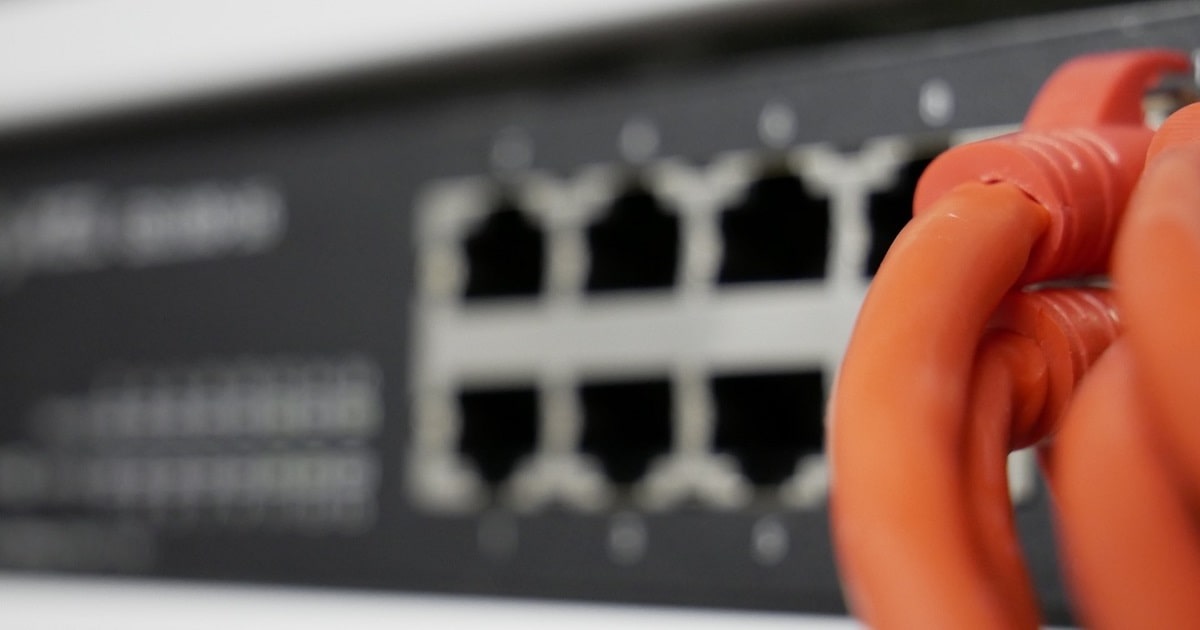
Hyper-Converged Infrastructure
Article | October 3, 2023
Unlocking the potential of hyper-converged infrastructure: Designing an advanced data center with scalability, efficiency, and performance for seamless HCI deployments through recent trends.
Contents
1. Introduction
2. Top Trends to consider in HCI
2.1. Public Cloud Services: An Option to On-premises Storage Infrastructure
2.2. Increasing Priority for Edge in Digital Businesses
2.3. Application Modernization
2.4. Hybrid and HCI: The Way to Future
2.5. HCI Automation Software in Pipeline
2.6. Backup and Disaster Recovery
2.7. Quadrupling of Micro Data and Edge Centers
3. Wrap Up
1. Introduction
In the era of hyper-converged infrastructure, designing an advanced data center is crucial to unlock the full potential of this transformative technology. With HCI combining compute, storage, and networking into a single platform, the data center must be carefully planned and optimized to ensure scalability, flexibility, and efficient operations. In this article, explore the key considerations and top hyper converged infrastructure trends for designing an advanced data center tailored for HCI, enabling organizations to harness the benefits of this innovative infrastructure.
2. Top Trends to consider in HCI
2.1 Public Cloud Services: An Option to On-premises Storage Infrastructure
HCI is experiencing the option of public cloud services as an alternative to on-premises storage infrastructure. By leveraging cloud services and native HCI platform file services, organizations can optimize workloads, leverage data storage services, eliminate silos, and create a unified and high-performance infrastructure. A 2019 ESG survey conducted among IT and data storage professionals found that public cloud storage infrastructure is increasingly favored over on-premises options. The survey revealed that IT professionals are twice as likely to consider public cloud storage infrastructure due to its benefits in cost efficiency, ease of procurement, automation capabilities, and simplified evaluation processes. Hyperconverged infrastructure facilitates on-premises and cloud-based deployments, enabling organizations to integrate and manage their IT infrastructure across both environments seamlessly. As organizations continue to explore hybrid IT strategies, HCI will play a critical role in providing a flexible and efficient infrastructure foundation.
2.2 Increasing Priority for Edge in Digital Businesses
Organizations are investing in IT to support this new business model of edge computing, and HCI plays a crucial role in enabling the deployment of edge resources. This trend also drives cloud adoption for such implementations, facilitating rapid responses to evolving business models and enabling dynamic scalability without impacting the core business. The rise of remote workforces has highlighted the importance of edge computing, where computing resources are brought closer to the point of data generation and consumption. This streamlined approach enables organizations to deploy and manage edge resources efficiently, ensuring reliable performance and data availability for remote employees. Furthermore, the adoption of IT infrastructure is complemented by the increasing use of cloud services. HCI serves as a bridge between on-premises infrastructure and the cloud, facilitating seamless integration and enabling organizations to leverage cloud capabilities for rapid scalability and flexibility.
2.3 Application modernization
One among Hyper-Converged Infrastructure trends, is application modernization is driving CIOs to seek opportunities for migrating to next-generation digital platforms that leverage HCI and cloud-native approaches. As part of this modernization approach, DevOps practices will need to incorporate containers and orchestration layers to provide the burst capabilities required to keep up with the escalating demands of digital experiences. The need for application modernization makes embracing advanced digital platforms that can efficiently modernize their existing applications compelling. This transformation allows for the rapid development of new products, services, and processes, enhancing customer experiences and increasing customer satisfaction. Containers provide a lightweight and scalable environment, allowing for consistent and reliable application deployment across various platforms. Orchestration tools streamline the management of containerized applications, enabling automated scaling, load balancing, and efficient resource allocation. By leveraging these containerization and orchestration layers, organizations can meet the growing demands of digital experiences, ensuring optimal performance and responsiveness.
2.4 Hybrid and HCI: The Way to Future
Traditional, cumbersome infrastructure is slowing down companies and impeding their ability to innovate faster than their more agile competitors. The future of IT infrastructure lies in hybrid environments, and HCI serves as a powerful facilitator for this transition. HCI allows businesses to seamlessly simplify their environments, optimize workload experiences, and improve scalability. According to research by 451 Research, 45% of respondents using HCI report that it facilitates resource scaling across their environments as circumstances and goals evolve. Additionally, an overwhelming 97% of HCI customers agree that HCI simplifies the deployment process for hybrid IT environments. This demonstrates the value and relevance of HCI in supporting the agility and flexibility demanded by the future of IT infrastructure. Fundamental innovations such as compute/storage disaggregation with HCI Mesh, native file services, and Kubernetes integration are broadening the range of applications for which HCI is well suited. With ongoing product innovations, such as compute/storage disaggregation, native file services, and Kubernetes integration, HCI continues to expand its range of applications, providing organizations with the performance, agility, and cost savings needed in modern IT infrastructure.
2.5 HCI Automation Software in Pipeline
The highly automated nature of HCI helps mitigate the risk of downtime by automating everyday life-cycle infrastructure management tasks, such as firmware upgrades and system refreshes. This automation reduces the need for complex, disruptive forklift upgrades traditionally prevalent in data centers. As a result, the data center becomes more intelligent and automated through the pervasive use of artificial intelligence and hyper-convergence, particularly in the monitoring and managing of assets and risks. Hyper converged infrastructure vendors are heavily investing in machine learning and automation to improve the underlying hardware and hyper-converged software for providing hyper converged solutions. The development of automation software, machine-learning-based AI for HCI reflects the industry's focus on enhancing HCI's efficiency, resilience, and manageability. Integrating artificial intelligence and automation technologies into HCI offerings paves the way for more intelligent and self-managing data centers. As the trend continues to evolve, organizations can expect greater automation capabilities and improved management of their decentralized and distributed systems through innovative HCI software solutions.
2.6 Backup and Disaster Recovery
Increasing concerns for faster data backup and security drive significant growth in the backup and disaster recovery application segment. Research firm MarketsAndMarkets reports that backup and disaster recovery are the fastest-growing applications within the hyper-converged market. One notable trend in the backup and disaster recovery space is the ability of hyper-convergence to reduce the total cost of ownership and operating expenses. Organizations can achieve cost savings and streamline their backup and disaster recovery processes by consolidating backup software, deduplication appliances, and storage arrays into a unified infrastructure. This integrated approach simplifies management, eliminates the need for separate components, and improves overall efficiency. According to MarketsAndMarkets, the global hyper-converged infrastructure market is projected to grow at a compound annual growth rate of 33 percent over the next four years, reaching a value of $17.1 billion by 2023. The demand for continuous application delivery and the increasing awareness among enterprises and small to medium-sized businesses are expected to drive this hyper converged market size expansion.
2.7 Quadrupling of Micro Data and Edge Centers
The evolution and adaptation of traditional enterprise data centers, driven by the rise of cloud computing, are paving the way for the expansion of micro or edge data centers. Gartner predicts that by 2025 these edge data centers will quadruple, fueled by innovations such as 5G and hyperconverged infrastructure. This shift presents an opportunity for hyper-converged offerings to consolidate servers, storage, networking, and software into a single, streamlined solution at the edge. While small remote office and edge deployments may require fewer storage and compute resources, they greatly benefit from centralized management and high-availability designs. HCI's ability to consolidate resources and its compact form factor make it an ideal solution for edge environments with limited physical space.
3. Wrap Up
Designing an advanced data center for hyper-converged infrastructure trends requires careful planning and consideration of key factors in HCI such as scalability, network architecture, storage requirements, and redundancy. By implementing approaches like modular design, modern digitalization, efficient cooling, proper power distribution, and robust security measures, organizations can create a data center that optimally supports HCI deployments. With an advanced data center, organizations can realize the full potential of HCI, achieving agility, scalability, and improved performance for their IT infrastructure.
An advanced data center tailored for hyper-converged infrastructure is essential to fully leverage HCI's benefits. By following the trends & techniques and considering critical factors in design, organizations can create a future-proof and efficient data center that enables seamless deployment and operation of HCI solutions, unlocking agility and scalability for their IT infrastructure.
Read More

Hyper-Converged Infrastructure
Article | July 13, 2023
Enterprises running hypervisors on hyper-converged infrastructure (HCI) systems typically have backup options available to them that are not available to those running on generic hardware. Such customers may also have additional backup challenges depending on the HCI vendor and hypervisor they have chosen. Let’s take a look.
Read More

Hyper-Converged Infrastructure
Article | October 10, 2023
In my last blog in this series, we looked at the present state of 5G. Although it’s still early and it’s impossible to fully comprehend the potential impact of 5G use cases that haven’t been built yet, opportunities to monetize 5G with little additional investment are out there for network service providers (NSPs) who know where to look.
Now, it’s time to look toward the future. Anyone who’s been paying attention knows that 5G technology will be revolutionary across many industry use cases, but I’m not sure everyone understands just how revolutionary, and how quickly it will go down. According to Gartner®, “While 10% of CSPs in 2020 provided commercializable 5G services, which could achieve multiregional availability, this number will increase to 60% by 2024”.[i]
With so many recognizing the value of 5G and acting to capitalize on it, NSPs that fail to prepare for future 5G opportunities today are doing themselves and their enterprise customers a serious disservice. Preparing for a 5G future may seem daunting but working with a trusted interconnection partner like Equinix can help make it easier.
5G is so challenging for NSPs and their customers because it is so revolutionary. Mobile radio networks were built with consumer use cases in mind, which means the traffic from those networks is generally dumped straight to the internet. 5G is the first generation of wireless technology capable of supporting enterprise-class business applications, which means it’s also forcing many NSPs to consider alternatives to the public internet to support those applications.
User plane function breakout helps put traffic near the app
In my last article, I mentioned that one of the key steps mobile network operators (MNOs) could take to enable 5G monetization in the short term would be to bypass the public internet by enabling user traffic functions in the data center. This is certainly a step in the right direction, but to prepare themselves for future 5G and multicloud opportunities, they must go further by enabling user plane function (UPF) breakout.
The 5G opportunities of tomorrow will rely on wireless traffic residing as close as possible to business applications, to reduce the distance data must travel and keep latency as low as possible. This is a similar challenge to the one NSPs faced in the past with their wireline networks. To address that challenge, they typically deployed virtual network functions (VNFs) on their own equipment. This helped them get the network capabilities they needed, when and where they needed them, but it also required them to buy colocation capacity and figure out how to interconnect their VNFs with the rest of their digital infrastructure.
Instead, Equinix customers have the option to do UPF breakout with Equinix Metal®, our automated bare-metal-as-a-service offering, or Network Edge virtual network services on Platform Equinix®. Both options provide a simple, cost-effective way to get the edge infrastructure needed to support 5G business applications. Since both offerings are integrated with Equinix Fabric™, they allow NSPs to create secure software-defined interconnection with a rich ecosystem of partners. This streamlines the process of setting up hybrid deployments.
Working with Equinix can help make UPF breakout less daunting. Instead of investing massive amounts of money to create 5G-ready infrastructure everywhere they need it, they can take advantage of more than 235 Equinix International Business Exchange™ (IBX®) data centers spread across 65 metros in 27 countries on five continents. This allows them to shift from a potentially debilitating up-front CAPEX investment to an OPEX investment spread over time, making the economics around 5G infrastructure much more manageable.
Support MEC with a wide array of partners
Multiaccess edge compute (MEC) will play a key role in enabling advanced 5G use cases, but first enterprises need a digital infrastructure capable of supporting it. This gets more complicated when they need to modernize their infrastructure while maintaining existing application-level partnerships. To put it simply, NSPs and their enterprise customers need an infrastructure provider that can not only partner with them, but also partner with their partners.
With Equinix Metal, organizations can deploy the physical infrastructure they need to support MEC at software speed, while also supporting capabilities from a diverse array of partners. For instance, Equinix Metal provides support for Google Anthos, Amazon Elastic Container Service (ECS) Anywhere and Amazon Elastic Kubernetes Service (EKS) Anywhere. These are just a few examples of how Equinix interconnection offerings make it easier to collaborate with leading cloud providers to deploy MEC-driven applications.
Provision reliable network slicing in a matter of minutes
Network slicing is another important 5G capability that can help NSPs differentiate their offerings and unlock new business opportunities. On the surface, it sounds simple: slicing up network traffic into different classes of service, so that the most important traffic is optimized for factors such as high throughput, low latency and security. However, NSPs won’t always know exactly what slices their customers will want to send or where they’ll want to send them, making network slice mapping a serious challenge.
Preparing for a 5G future may seem daunting but working with a trusted interconnection partner like Equinix can help make it easier.”
Equinix Fabric offers a quicker, more cost-effective way to map network slices, with no need for cross connects to be set on the fly. With software-defined interconnection, the counterparty that receives the network slice essentially becomes an automated function that NSPs can easily control. This means NSPs can provision network slicing in a matter of minutes, not days, even when they don’t know who the counterparty is going to be. Service automation enabled by Equinix Fabric can be a critical element of an NSP’s multidomain orchestration architecture.
5G use case: Reimagining the live event experience
As part of the MEF 3.0 Proof of Concept showcase, Equinix partnered with Spectrum Enterprise, Adva, and Juniper Networks to create a proof of concept (PoC) for a differentiated live event experience. The PoC showed how event promoters such as minor league sports teams could ingest multiple video feeds into an AI/ML-driven GPU farm that lives in an Equinix facility, and then process those feeds to present fans with custom content on demand.
With the help of network slicing and high-performance MEC, fans can build their own unique experience of the event, looking at different camera angles or following a particular player throughout the game. Event promoters can offer this personalized experience even without access to the on-site data centers that are more common in major league sports venues.
DISH taps Equinix for digital infrastructure services in support of 5G rollout
As DISH looks to build out the first nationwide 5G network in the U.S., they will partner with Equinix to gain access to critical digital infrastructure services in our IBX data centers. This is a great example of how Equinix is equipped to help its NSP partners access the modern digital infrastructure needed to capitalize on 5G—today and into the future.
DISH is taking the lead in delivering on the promise of 5G in the U.S., and our partnership with Equinix will enable us to secure critical interconnections for a nationwide 5G network. With proximity to large population centers, as well as network and cloud density, Equinix is the right partner to connect our cloud-native 5G network.”
- Jeff McSchooler, DISH executive vice president of wireless network operations
Read More

Article | April 25, 2020
IT infrastructure scaling is when the size and power of an IT system are scaled to accommodate changes in storage and workflow demands. Infrastructure scaling can be horizontal or vertical. Vertical scaling, or scaling up, adds more processing power and memory to a system, giving it an immediate boost. Horizontal scaling, or scaling out, adds more servers to the cloud, easing the bottleneck in the long run, but also adding more complexity to the system.
Read More